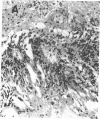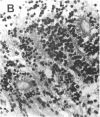Abstract
A female infant with the typical clinical and histopathological features of vitreoretinal dysplasia is described. She had an apparently balanced reciprocal chromosomal translocation 46XX,t(X;10) with the X chromosome breakpoint being on the short arm. Since the parents' karyotypes were normal, it is most plausible that a de novo chromosomal translocation disrupted the vitreoretinal dysplasia gene itself. The severe clinical symptoms of this heterozygous female patient were explained by non-random X inactivation. She may have had Norrie's disease, an X linked recessive disorder due to an X autosome translocation.
Full text
PDF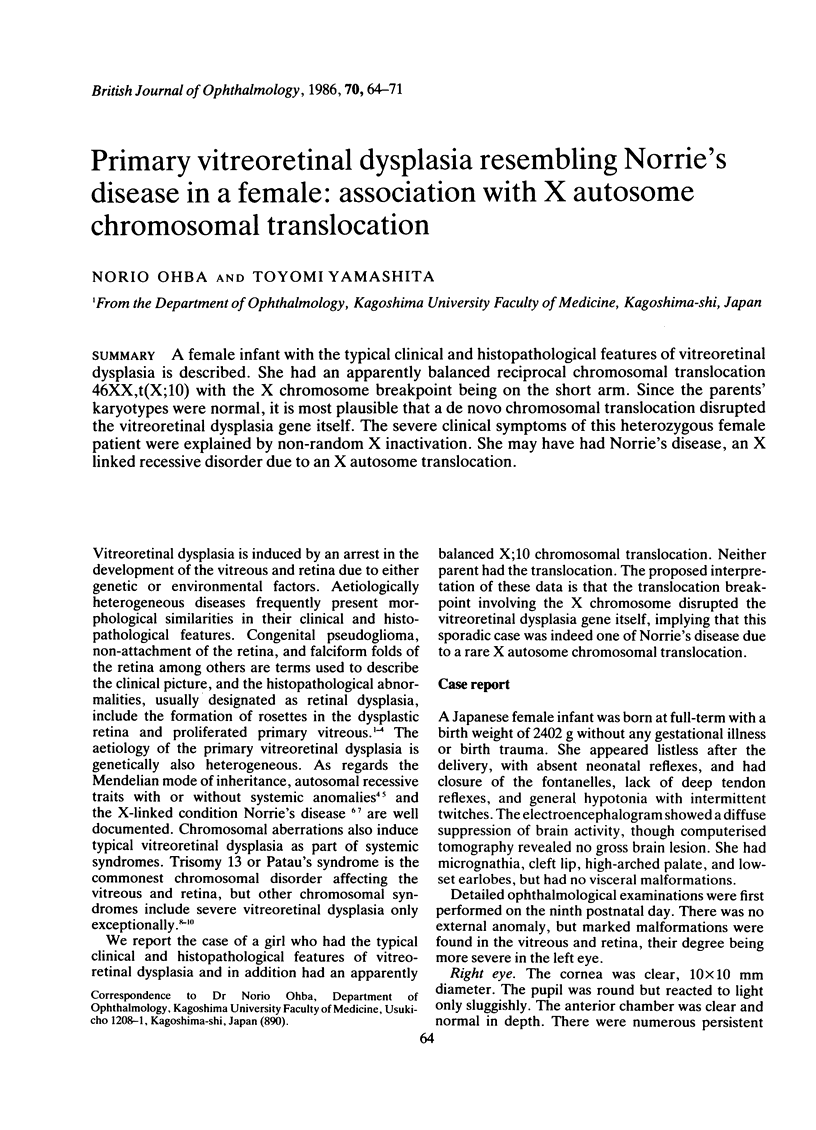

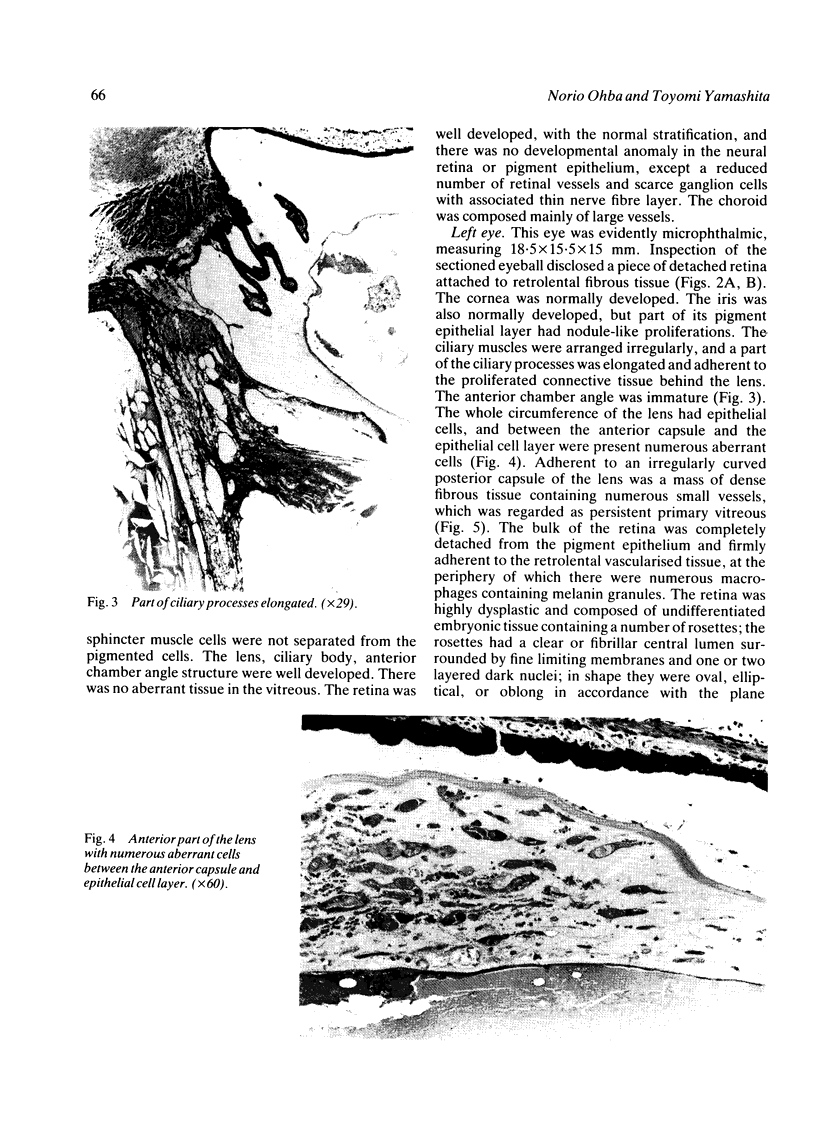
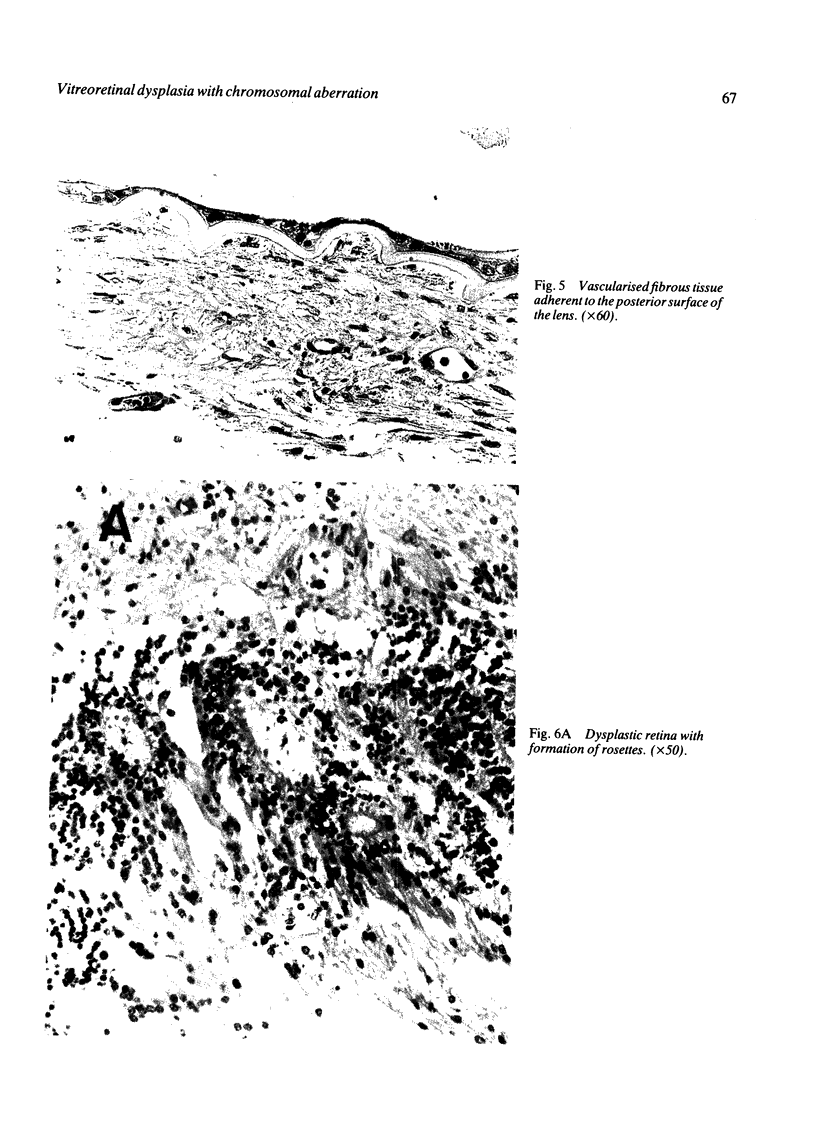
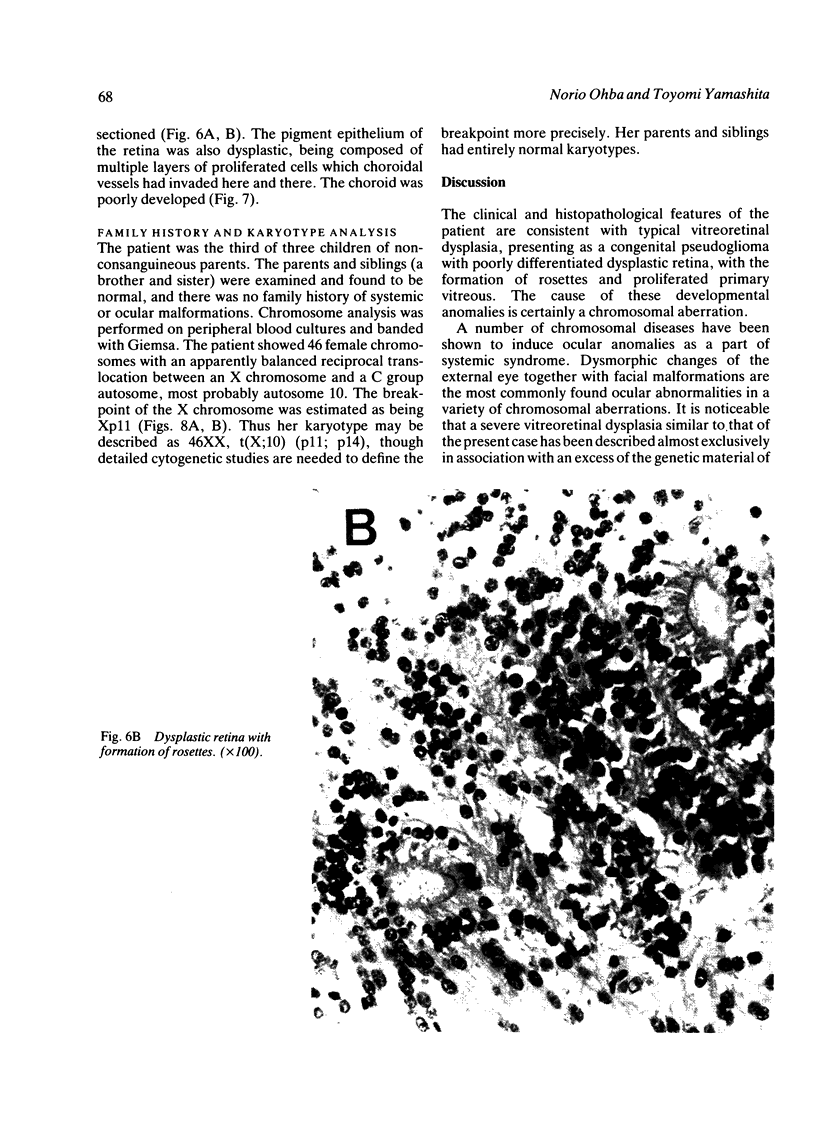
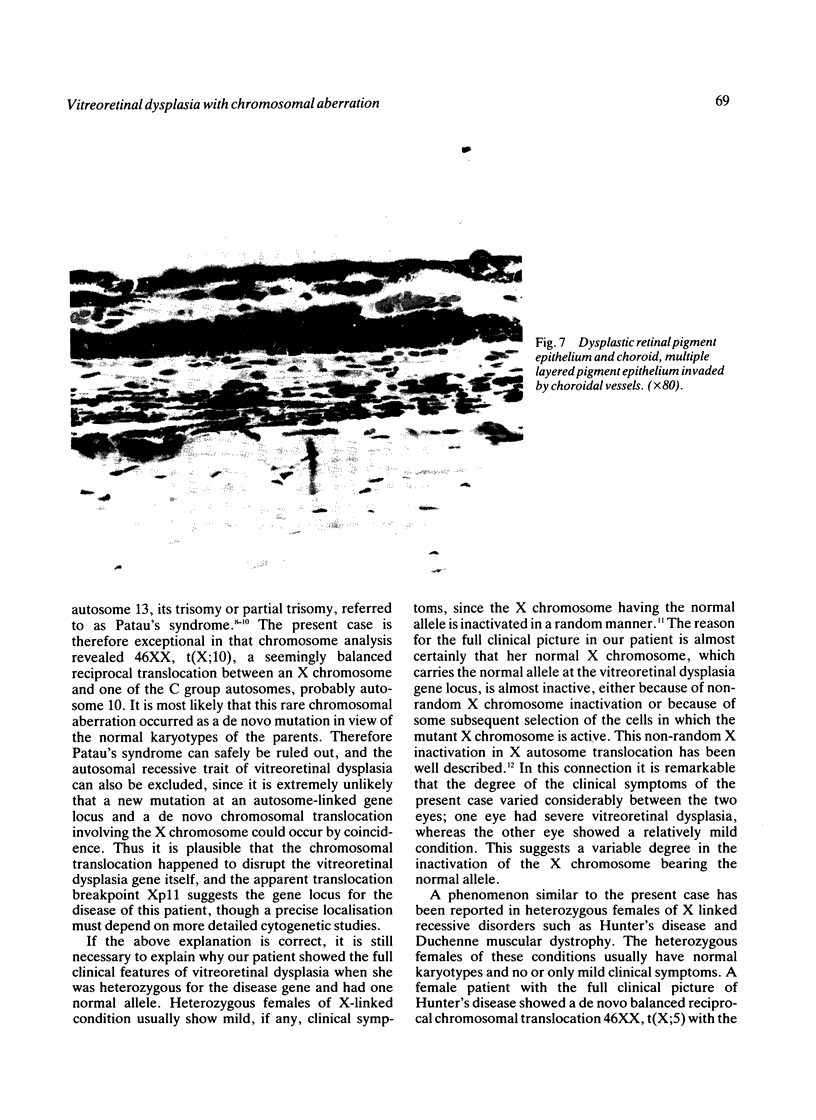

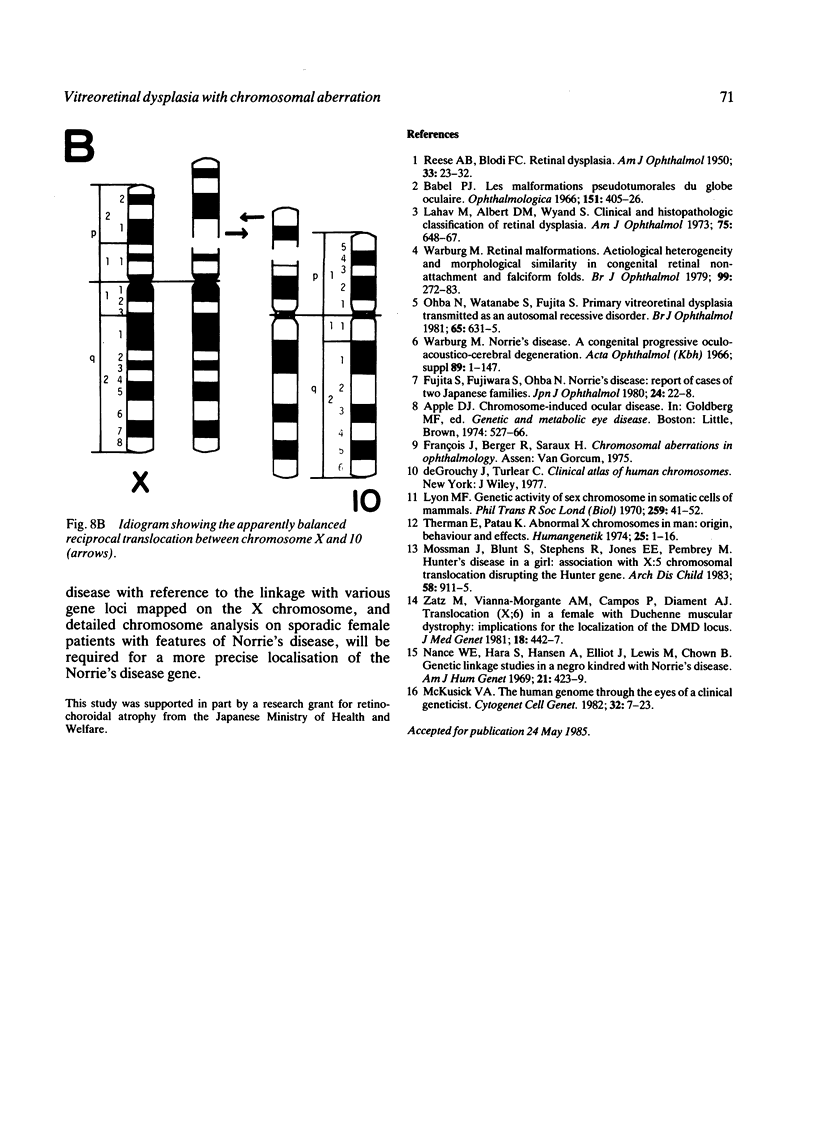
Images in this article
Selected References
These references are in PubMed. This may not be the complete list of references from this article.
- Babel J. Les malformations pseudotumorales du globe oculaire. Ophthalmologica. 1966;151(3):405–426. doi: 10.1159/000304901. [DOI] [PubMed] [Google Scholar]
- Lahav M., Albert D. M., Wyand S. Clinical and histopathologic classification of retinal dysplasia. Am J Ophthalmol. 1973 Apr;75(4):648–667. doi: 10.1016/0002-9394(73)90817-9. [DOI] [PubMed] [Google Scholar]
- Lyon M. F. Genetic activity of sex chromosomes in somatic cells of mammals. Philos Trans R Soc Lond B Biol Sci. 1970 Aug 6;259(828):41–52. doi: 10.1098/rstb.1970.0044. [DOI] [PubMed] [Google Scholar]
- McKusick V. A. The human genome through the eyes of a clinical geneticist. Cytogenet Cell Genet. 1982;32(1-4):7–23. doi: 10.1159/000131682. [DOI] [PubMed] [Google Scholar]
- Mossman J., Blunt S., Stephens R., Jones E. E., Pembrey M. Hunter's disease in a girl: association with X:5 chromosomal translocation disrupting the Hunter gene. Arch Dis Child. 1983 Nov;58(11):911–915. doi: 10.1136/adc.58.11.911. [DOI] [PMC free article] [PubMed] [Google Scholar]
- Nance W. E., Hara S., Hansen A., Elliott J., Lewis M., Chown B. Genetic linkage studies in a Negro kindred with Norrie's disease. Am J Hum Genet. 1969 Sep;21(5):423–429. [PMC free article] [PubMed] [Google Scholar]
- Ohba N., Watanabe S., Fujita S. Primary vitreoretinal dysplasia transmitted as an autosomal recessive disorder. Br J Ophthalmol. 1981 Sep;65(9):631–635. doi: 10.1136/bjo.65.9.631. [DOI] [PMC free article] [PubMed] [Google Scholar]
- REESE A. B., BLODI F. C. Retinal dysphasia. Am J Ophthalmol. 1950 Jan;33(1):23-32, illust. doi: 10.1016/0002-9394(50)90695-7. [DOI] [PubMed] [Google Scholar]
- Therman E., Patau K. Abnormal X chromosomes in man: origin, behavior and effects. Humangenetik. 1974;25(1):1–16. doi: 10.1007/BF00281002. [DOI] [PubMed] [Google Scholar]
- Warburg M. Doyne Memorial Lecture, 1979. Retinal malformations: aetiological heterogeneity and morphological similarity in congenital retinal non-attachment and falciform folds. Trans Ophthalmol Soc U K. 1979 Jul;99(2):272–283. [PubMed] [Google Scholar]
- Zatz M., Vianna-Morgante A. M., Campos P., Diament A. J. Translocation (X;6) in a female with Duchenne muscular dystrophy: implications for the localisation of the DMD locus. J Med Genet. 1981 Dec;18(6):442–447. doi: 10.1136/jmg.18.6.442. [DOI] [PMC free article] [PubMed] [Google Scholar]









